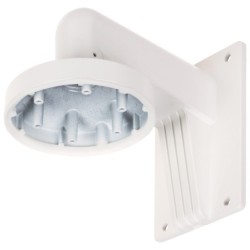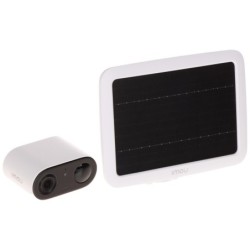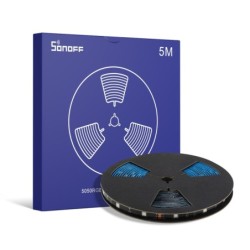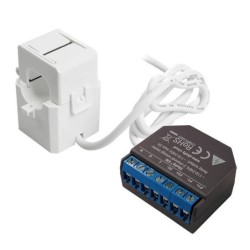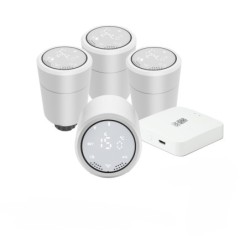











 Security policy
Security policy
(edit with the Customer Reassurance module)
 Delivery policy
Delivery policy
(edit with the Customer Reassurance module)
 Return policy
Return policy
(edit with the Customer Reassurance module)
ZigBee Homekit TUYA Flood Sensor
ZigBee TUYA Flood Sensor that also works in the DOM app for iOS. Thanks to the long sensor, we can install it practically anywhere! Don't worry anymore about flooding your apartment/house. Use a sensor and connect it to automation, e.g. with a valve controller (available in our offer). If a leak occurs, the sensor will send a signal to the controller and the water will be turned off! Main advantages:
The device also works with the DOM application for iOS
The application contains a record of changes in sensor states
LED indicator enabling quick reading of the sensor status
Detection of water leaks to prevent serious damage Much damage
Active notifications that inform about leaks in real time
High sensitivity of the sensor guarantees effective detection of even small leaks
Powered by 2 x AA batteries, which ensures independence from an external source power supply
Scene association that allows integration with other devices in the smart home system
easy installation allows you to quickly install the sensor in your home
Compatibility with the smart home system, ensuring full functionality and integration with other devices
Attention! This device requires a ZigBee 3.0 TUYA gateway available in our offer.
TUYA application
In the application we can view the current status of the sensor, battery status, history of status changes and the ability to set automation. Automations
HomeKit (DOM)/TUYA application support allows you to create custom scenes that can be connected to selected ZigBee or WiFi devices. Thanks to this, you can create intelligent scenarios that will ensure safety in your home. High sensitivity
Accurate flood detection is achieved by using a probe that detects overflow or leakage in the room. When the probe detects the presence of water, the alarm mechanism is automatically activated and a push notification is sent to your smartphone. Thanks to this, you immediately receive information about the potential risk of flooding, which allows you to take the necessary actions to protect yourself and minimize losses. Application
The sensor is suitable for many automations and can be installed in various places. The device can be used, for example, in homes, offices, warehouses, hotels and other places that require monitoring of leaks or overflows. Basics of the ZigBee protocol: The ZigBee protocol operates on the 2.4 GHz frequency, which propagates well in buildings. ZigBee connectivity is beheaded MESH which means that each ZigBee device with full L+N power works as a signal amplifier for other devices. If the remote sensor has no connection with the ZigBee gateway, it is enough that it has radio communication with another ZigBee device with full L+N power, which has communication with the gateway (up to 3 devices). The devices work in a mesh chain of connections, which ensures reliability and certainty of the connection
Devices using the ZigBee protocol in the event of a change state, they connect to the control panel in 0.2 seconds, and WiFi need about 5 seconds to connect to the network after the state change. ZigBee devices have a huge advantage when it comes to automating smart rules
On a WiFi network, with 25 devices, you will start to experience network problems. You can easily add over 50 devices to the ZigBee switchboard
The ZigBee gateway and ZigBee devices allow for much wider and longer storage of parameter data and device history. Door opening history, temperature history, motion detection history saved for months back
ZigBee communication uses very little energy, which gives a long battery life.
Specification:
Power supply: 2 x AA batteries Standby current: 2.5 uA Operating temperature: 0°C ~ 50°C Protocol: ZigBee 3.0 IEEE 802.15.4 Product size: 82 x 42 x 16 mm Included:
Flood sensor
Manual
Product code: T130
Your review appreciation cannot be sent
Report comment
Report sent
Your report cannot be sent
Write your review
Review sent
Your review cannot be sent

check_circle
check_circle
